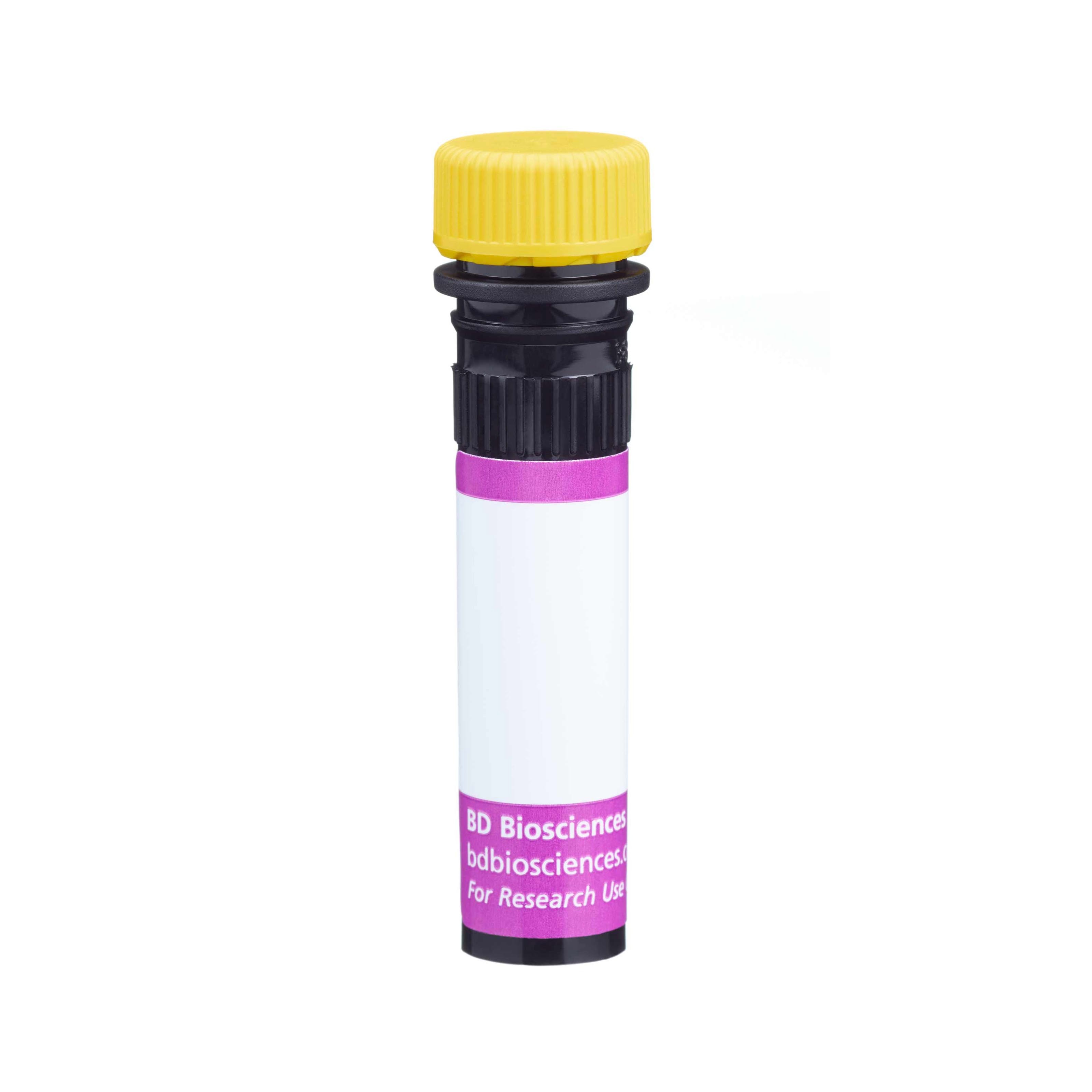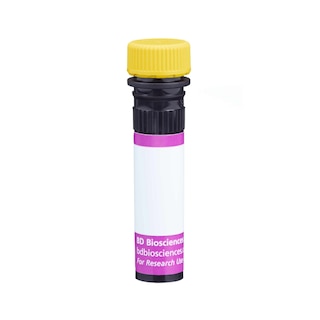-
Your selected country is
Middle East / Africa
- Change country/language
Old Browser
This page has been recently translated and is available in French now.
Looks like you're visiting us from {countryName}.
Would you like to stay on the current country site or be switched to your country?




Flow cytometric analysis of CD45.1 expression on mouse splenocytes. Splenic leucocytes from a C57BL/6 mouse (Left Panel) and SJL/J (Right Panel) mouse were separately preincubated with Purified Rat Anti-Mouse CD16/CD32 antibody (Mouse BD Fc Block™) (Cat. No. 553141/553142). The cells were then stained with either BD Horizon™ BV650 Mouse IgG2a, κ Isotype Control (Cat. No. 563417; dashed line histogram) or BD Horizon™ BV650 Mouse Anti-Mouse CD45.1 antibody (Cat. No. 563754; solid line histogram). Flow cytometric fluorescence histograms were derived from gated events based on forward and side light-scatter characteristics of viable splenocytes. Flow cytometric analysis was performed using a BD LSRFortessa™ Cell Analyzer System.


BD Horizon™ BV650 Mouse Anti-Mouse CD45.1

Regulatory Status Legend
Any use of products other than the permitted use without the express written authorization of Becton, Dickinson and Company is strictly prohibited.
Preparation And Storage
Product Notices
- Since applications vary, each investigator should titrate the reagent to obtain optimal results.
- An isotype control should be used at the same concentration as the antibody of interest.
- Caution: Sodium azide yields highly toxic hydrazoic acid under acidic conditions. Dilute azide compounds in running water before discarding to avoid accumulation of potentially explosive deposits in plumbing.
- Source of all serum proteins is from USDA inspected abattoirs located in the United States.
- Alexa Fluor® is a registered trademark of Molecular Probes, Inc., Eugene, OR.
- Brilliant Violet™ 650 is a trademark of Sirigen.
- For fluorochrome spectra and suitable instrument settings, please refer to our Multicolor Flow Cytometry web page at www.bdbiosciences.com/colors.
- Please refer to www.bdbiosciences.com/us/s/resources for technical protocols.
Companion Products





The A20 monoclonal antibody specifically binds to CD45 (Leukocyte Common Antigen) on all leukocytes of mouse strains expressing the CD45.1 alloantigen (eg, RIII, SJL/J, STS/A, DA). This alloantigen was originally named Ly-5.2, but was later changed to Ly-5.1 to conform with the convention that the .2 alloantigen designates the C57BL/6 strain. mAb A20 has been reported not to react with leukocytes of most other mouse strains which express the CD45.2 alloantigen. CD45 is a member of the Protein Tyrosine Phosphatase (PTP) family; its intracellular (COOH-terminal) region contains two PTP catalytic domains while the extracellular region is highly variable due to alternative splicing of exons 4, 5, and 6 (designated A, B, and C, respectively), and differing levels of glycosylation. CD45 isoforms in the mouse are cell type-, maturation-, and activation state-specific. The CD45 isoforms play complex roles in T-cell and B-cell antigen receptor signal transduction. The A20 antibody has been reported to inhibit some responses of B cells (from mice expressing the CD45.1 alloantigen) to antigens and LPS.
The antibody was conjugated to BD Horizon™ BV650 which is part of the BD Horizon™ Brilliant Violet™ family of dyes. This dye is a tandem fluorochrome of BD Horizon™ BV421 with an Ex Max of 405-nm and an acceptor dye with an Em Max at 650-nm. BD Horizon™ BV650 can be excited by the violet laser and detected in a filter used to detect APC-like dyes (eg, 660/20-nm filter). Due to the excitation and emission characteristics of the acceptor dye, there will be spillover into the APC and Alexa Fluor® 700 detectors. However, the spillover can be corrected through compensation as with any other dye combination.

Development References (7)
-
Johnson P, Greenbaum L, Bottomly K, Trowbridge IS. Identification of the alternatively spliced exons of murine CD45 (T200) required for reactivity with B220 and other T200-restricted antibodies. J Exp Med. 1989; 169(3):1179-1184. (Biology). View Reference
-
Morse HC 3rd, Shen FW, Hammerling U. Genetic nomenclature for loci controlling mouse lymphocyte antigens. Immunogenetics. 1987; 25(2):71-78. (Biology). View Reference
-
Shen FW, Tung JS, Boyse EA. Further definition of the Ly-5 system. Immunogenetics. 1986; 24(3):146-149. (Clone-specific: Immunoprecipitation). View Reference
-
Shen FW. Monoclonal antibodies to mouse lymphocyte differentiation alloantigens. In: Hammerling GJ, Hammerling U, Kearney JF, ed. Monoclonal Antibodies and T-cell Hybridomas; Perspectives and Technical Advances. 1981:25-31.
-
Suzuki K, Oida T, Hamada H, et al. Gut cryptopatches: direct evidence of extrathymic anatomical sites for intestinal T lymphopoiesis. Immunity. 2000; 13(5):691-702. (Clone-specific: Flow cytometry, Fluorescence microscopy, Immunofluorescence, Immunohistochemistry). View Reference
-
Yakura H, Kawabata I, Shen FW, Katagiri M. Selective inhibition of lipopolysaccharide-induced polyclonal IgG response by monoclonal Ly-5 antibody. J Immunol. 1986; 136(8):2729-2733. (Clone-specific: Functional assay, Inhibition). View Reference
-
Yakura H, Shen FW, Bourcet E, Boyse EA. On the function of Ly-5 in the regulation of antigen-driven B cell differentiation. Comparison and contrast with Lyb-2. J Exp Med. 1983; 157(4):1077-1088. (Clone-specific: Functional assay, Inhibition). View Reference
Please refer to Support Documents for Quality Certificates
Global - Refer to manufacturer's instructions for use and related User Manuals and Technical data sheets before using this products as described
Comparisons, where applicable, are made against older BD Technology, manual methods or are general performance claims. Comparisons are not made against non-BD technologies, unless otherwise noted.
For Research Use Only. Not for use in diagnostic or therapeutic procedures.
Report a Site Issue
This form is intended to help us improve our website experience. For other support, please visit our Contact Us page.